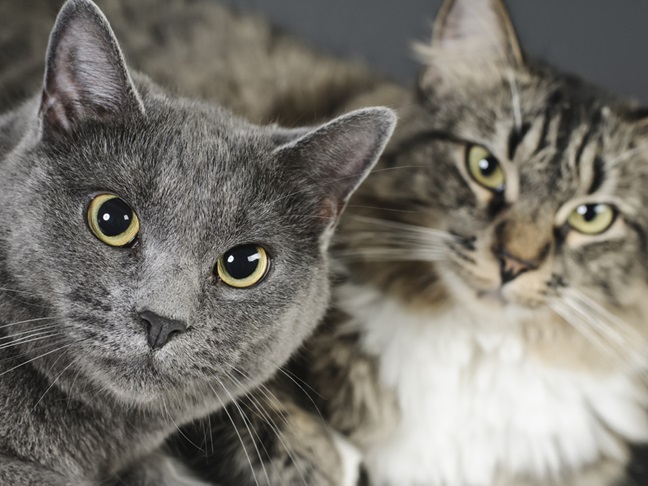What You Can Do to Foster Friendly-Feline Relationships
Often cat lovers, bringing new cats into the household are unaware of the social issues that can occur. They feel sorry for a kitten they’ve found or a cat that has been abandoned and introduce the newcomer to the family simply leaving it to fend for itself without properly preparing the household to accept a change brought about by another cat. The premise is the cats to ‘work it out’ or ‘determine who is boss’.
Not so! If cats don’t accept cats outside of their social circle in the wild, there is no guarantee that they will accept and like one another in a domestic situation. Consequently if there is conflict, it NEVER goes away. It’s like being trapped in the toxic office environment as described above for the rest of your life!
Fortunately, in a domestic situation, you can take steps to create a state of non-confrontational co-habitation.
Make Proper Introductions:
Firstly, every time you bring a new pet into a household, it’s important to do proper introductions. (This applies to dogs too.) When introducing a new cat to an incumbent cat, confine the newcomer to one room with food, water and a litter box for a week, possibly longer. (It can take as long as a month). Introduce her to the incumbent cat first by smell. To do this, take a pair of socks, rub one on her and one on your incumbent feline and exchange the socks with the cats. After they are used to the smell of each other this way, you can bring them face-to-face for supervised visits until you are comfortable leaving them alone.
The two cats may turn out to love each other, or may be indifferent to each other but get along. In these instances, the initial hissing and growling will subside.
Watch for Signs of Hostility:
But then there is the situation where they can’t stand each other and the problem is permanent, characterized by on-going overt aggression with open mouthed, sustained vocalizations and physical altercations.
According to Duxbury, cat owners often miss signs of covert or passive aggression too such as staring and blocking physical space like the exit from the litter box.
Set a Friendly Environment:
Such overt and passive conflict can be diminished, possibly removed, depending on the spatial arrangements in the household.
Cats have a harder time avoiding each other in homes with narrow hallways, lots of corners and small rooms. So consider dividing up your home by placing litter boxes, food and water in different areas of the house so that every cat in the household can get what she needs without encountering a feline bully.
“This is especially important in order to promote successful litter box use by all cats in a household,” says Duxbury. “In homes with intercat conflict, cats are often reluctant to use litter boxes that are covered, in enclosed cubbies, or accessible only after passing through a narrow hall or doorway,”
So make sure you have large open pans and place them so that the user can see whom is approaching from all sides.
Another way to avoid conflict is to increase the space in the home by “going vertical” and adding perches and runways at ceiling height. You can add more options such as lofty hidey-holes and create new exits and entrances through walls at this elevated level so that cats can come and go without being trapped.
Behaviorists also suggest putting a bell on the collar of the most assertive feline in the household to give warning to other felines that she’s approaching.
Also consider creating a safe zone by kitting one room of your home with a computerized cat door that only cats wearing the proper microchip on their collar can access.
Such changes can go a long way towards decreasing social pressure and improving quality of life for all the felines in the household. And, in so doing, it’s much less stressful for the humans who live there too!








